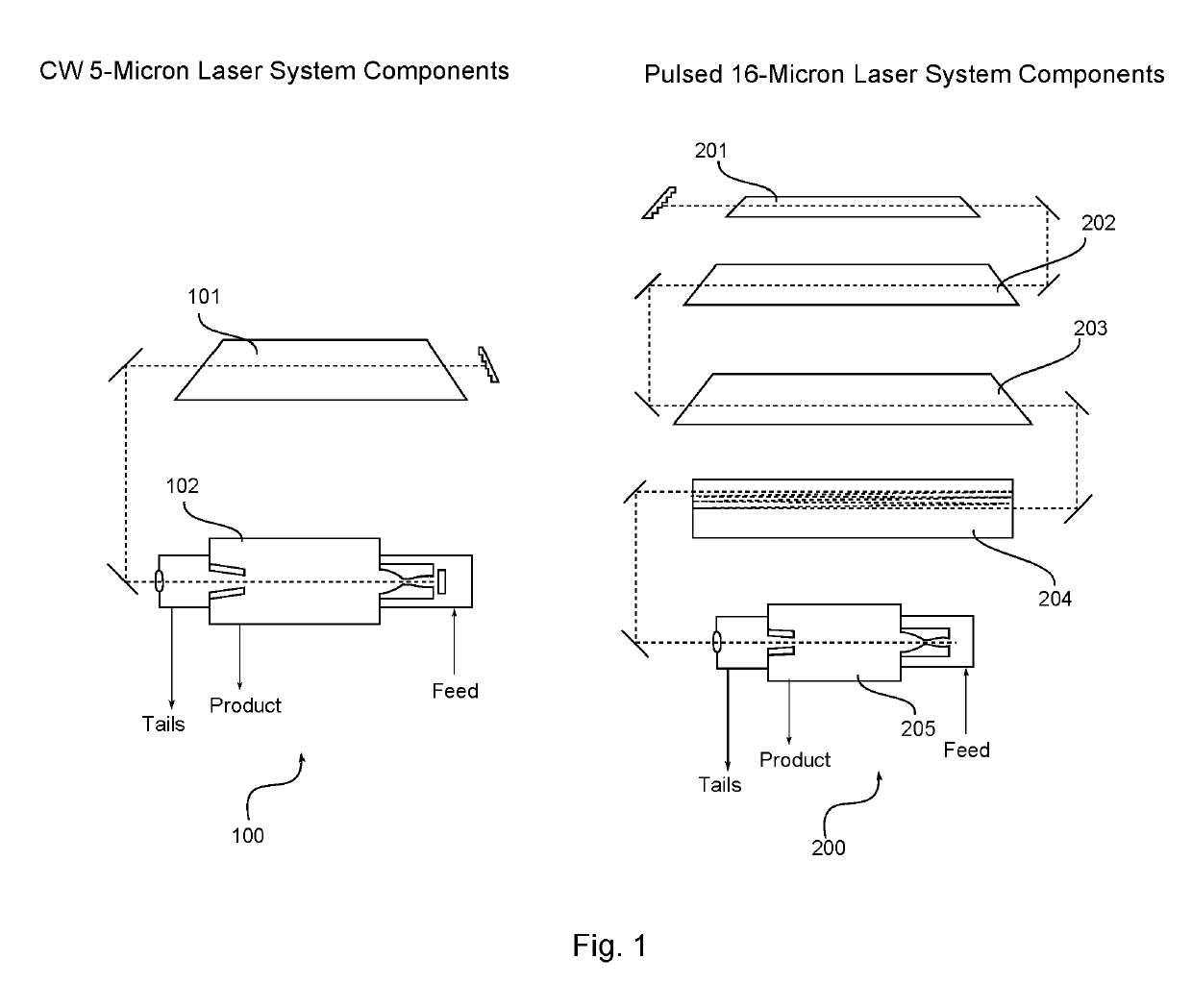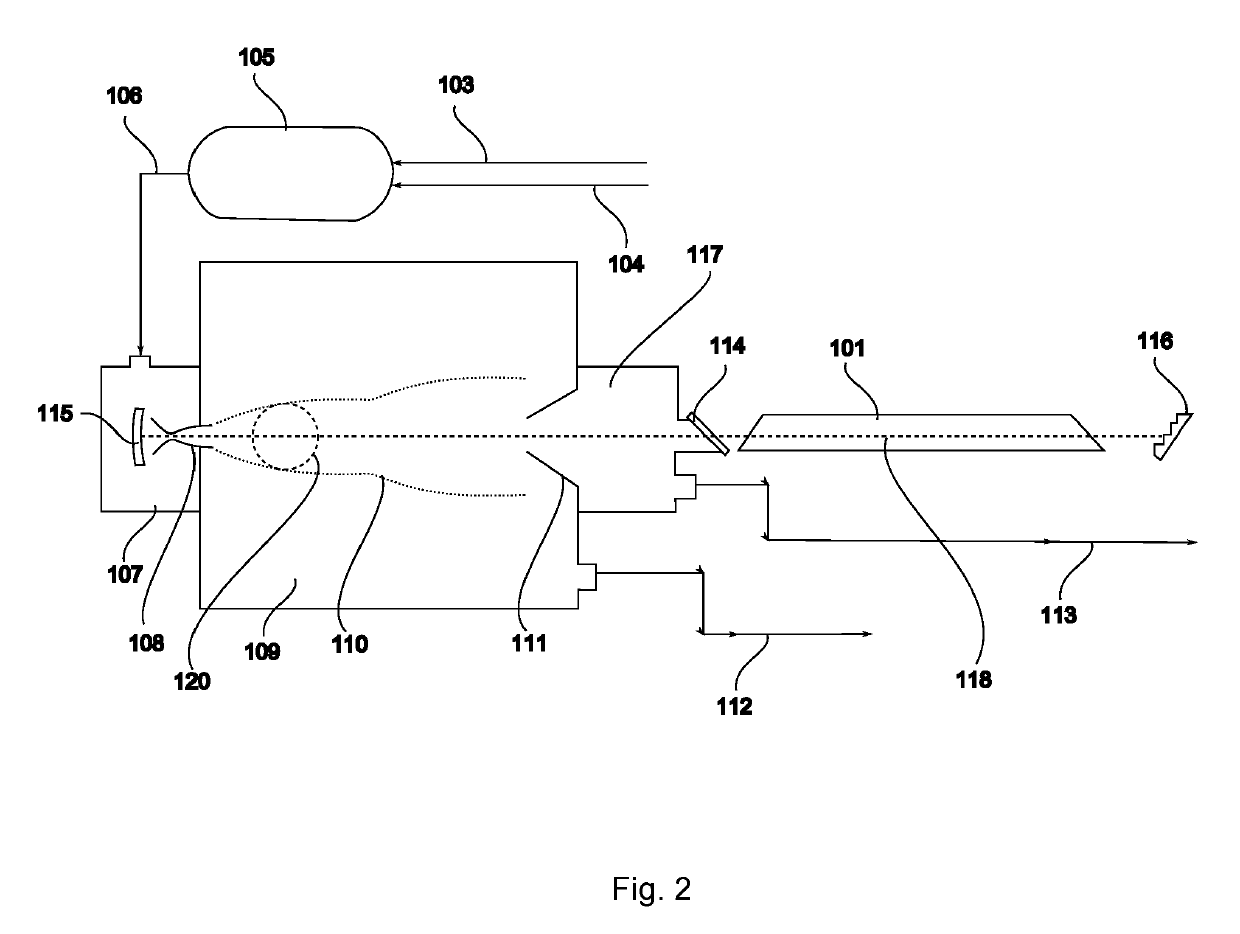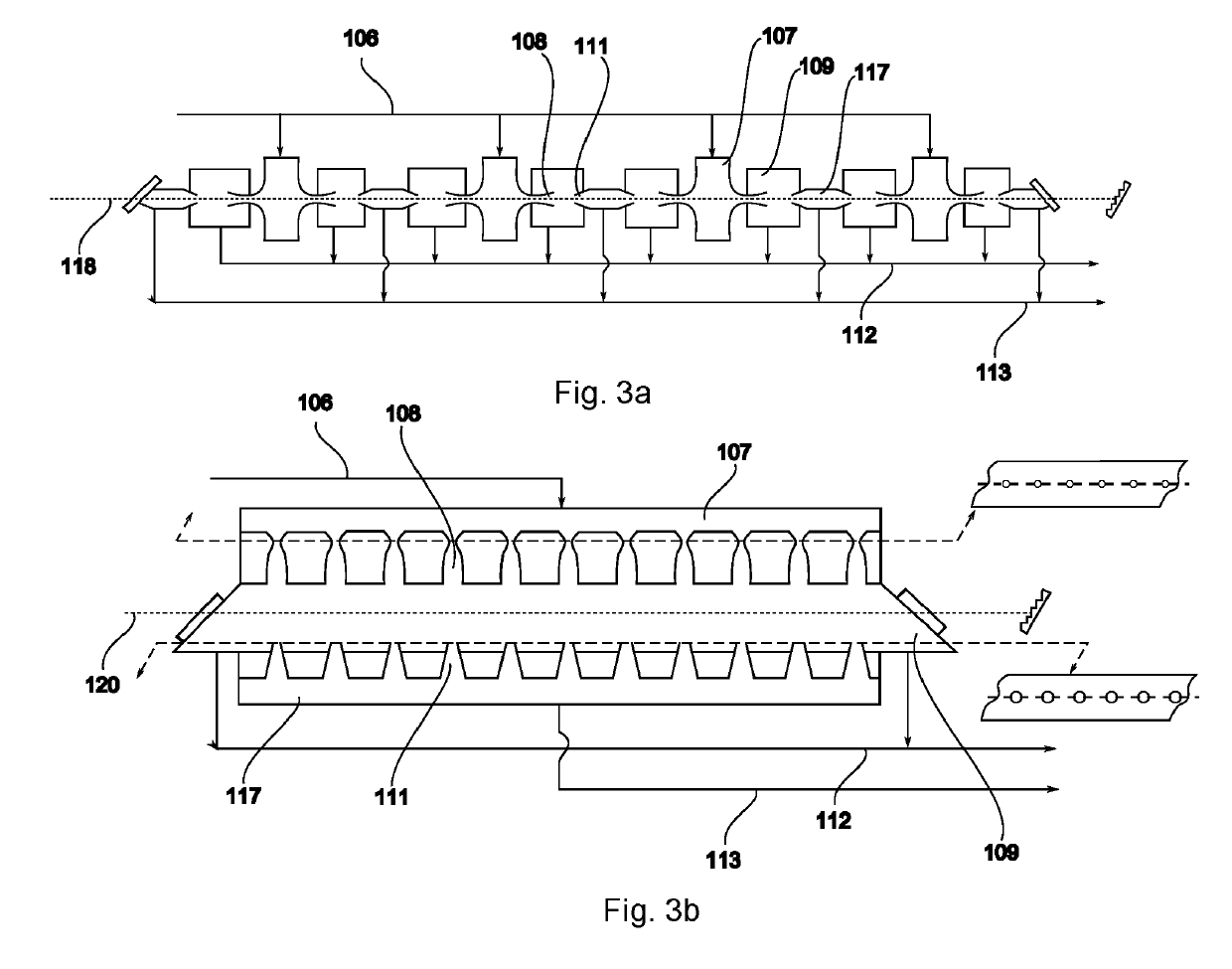Process and apparatus for condensation repressing isotope separation by laser activation
- Summary
- Abstract
- Description
- Claims
- Application Information
AI Technical Summary
Benefits of technology
Problems solved by technology
Method used
Image
Examples
Embodiment Construction
[0085]Turning first to FIG. 1, a 5-micron CW laser-driven CRISLA system 100 schematic is compared with that of a 16-micron pulsed laser uranium enrichment scheme 200. The complexity of providing pulsed 16-micron laser irradiation to the jet process chamber compared to continuous 5-micron laser delivery is immediately apparent. For simplicity, in FIG. 1 only a single irradiation process cell is shown, but in preferred embodiments of the advanced CRISLA system the system may comprise many (for example, one hundred) adjacent irradiated intra-cavity mini jets as shown in FIGS. 3a, 3b, and 3c. In the 16-micron case the incoming laser beam that enters the irradiation cell can be split and used to irradiate a number of production cells, but only uni-directionally; not as in the 5-micron CRISLA system, which can support a bi-directional intra-cavity recycling laser beam. Note that in FIG. 1 laser beam paths are shown with dashed lines.
[0086]As may be seen in FIG. 1, the advanced CW 5-micron...
PUM
 Login to View More
Login to View More Abstract
Description
Claims
Application Information
 Login to View More
Login to View More - R&D
- Intellectual Property
- Life Sciences
- Materials
- Tech Scout
- Unparalleled Data Quality
- Higher Quality Content
- 60% Fewer Hallucinations
Browse by: Latest US Patents, China's latest patents, Technical Efficacy Thesaurus, Application Domain, Technology Topic, Popular Technical Reports.
© 2025 PatSnap. All rights reserved.Legal|Privacy policy|Modern Slavery Act Transparency Statement|Sitemap|About US| Contact US: help@patsnap.com



